Back to top: Lithics from Unit J3
Introduction
Lithic artifacts comrise 43% of the items excavated so far in Unit J3. The vast majority range from obsidian and chert blades (93), to debitage (16), to stones for grinding (47) and other uses (33). There were also 8 beads, 6 door sockets, and 47 lithic artifacts not specifically defined.
Coincidentally, this is virtually the same percentage of lithic artifacts excavated in J2 and J5.
Back to top: Lithics from Unit J3
Blades
Fragments of flint blades, scrapers, and other small tools, as well as the debitage from their manufacture were the single-most common items. Almost all of the blades were broken. One may have been a sickle point. There were few obsidian fragments found.
| Sickle blade | 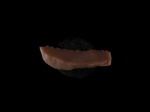 q95.1 |
Back to top: Lithics from Unit J3
Grinding and Polishing Stones
There were three-quarters as many grinding stones as blades excavated. As with other types of items, most were widely scattered. One was incorporated into grave a1. There were a significant number of medium-sized stone polishing tools of various shapes. We identified them as such by at least one smooth surface.
| Large tools | 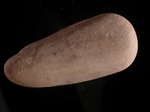 i10 |
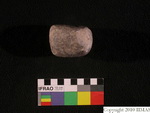 q422.4 |
Back to top: Lithics from Unit J3
Well-crafted stone
There were three items that reflected a high degree of skill in manufacture. They were the head of an ax, a bead, and a pendant.
| Ax head | 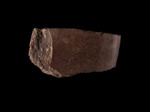 i10 |
Bead | 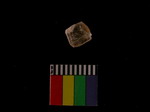 i6 |
Pendant | 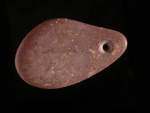 i6 |
Back to top: Lithics from Unit J3
Miscellaneus
There were several broken stone artifacts shaped roughly like stone donuts. See q543.5. Several uses have been proposed, including pivot stones for pottery wheels, door sockets, and soil tampers. One lithic specimens were retained.
Back to top: Lithics from Unit J3